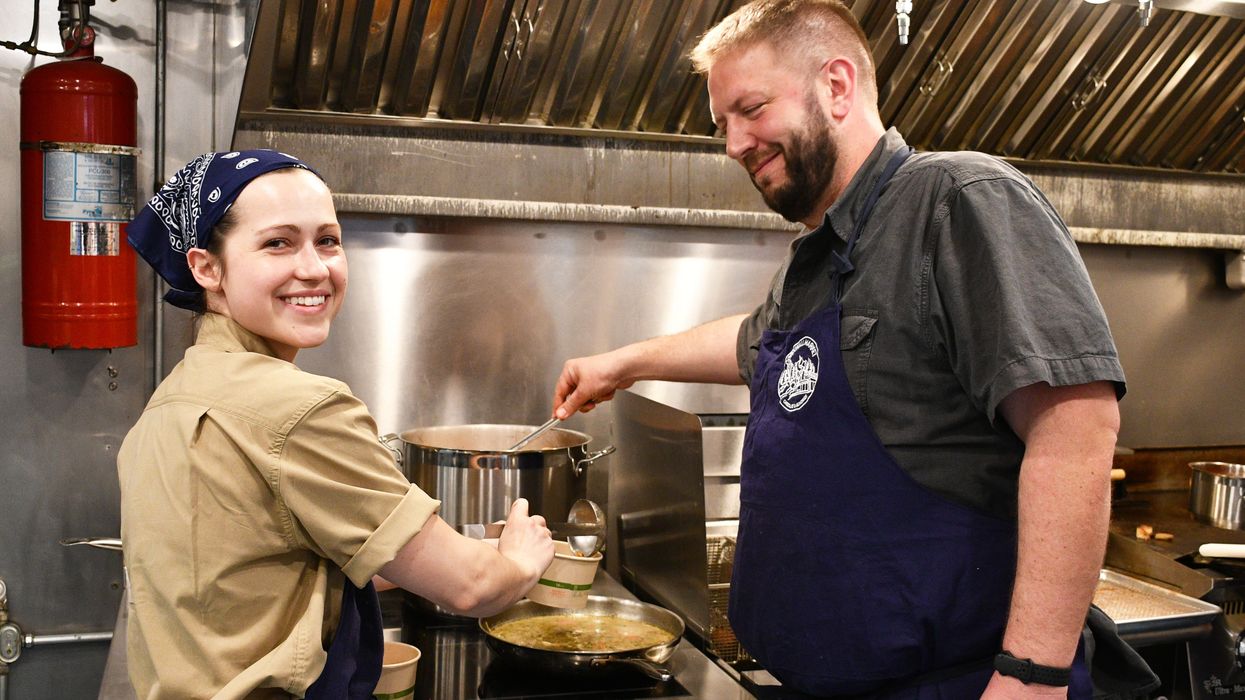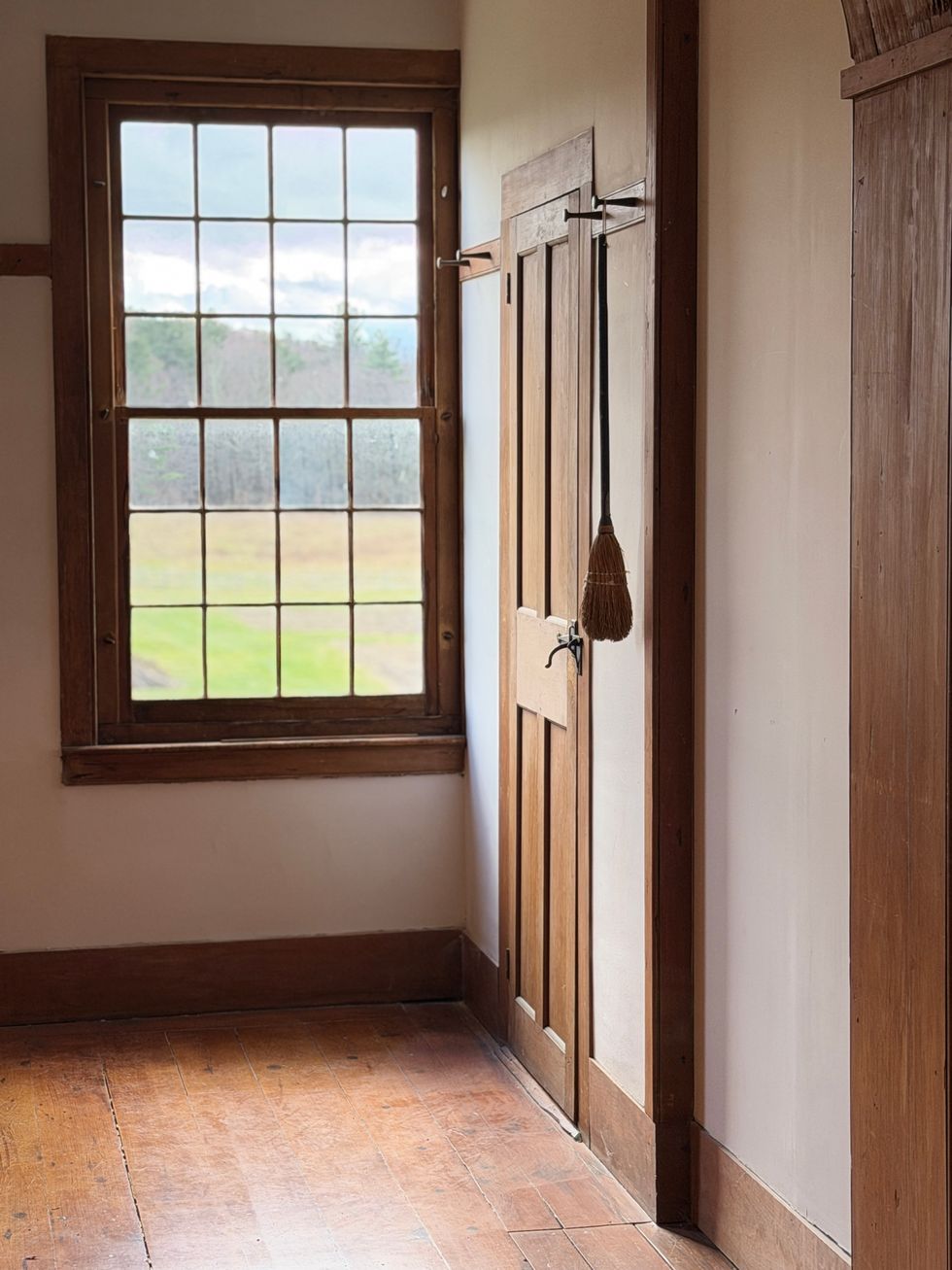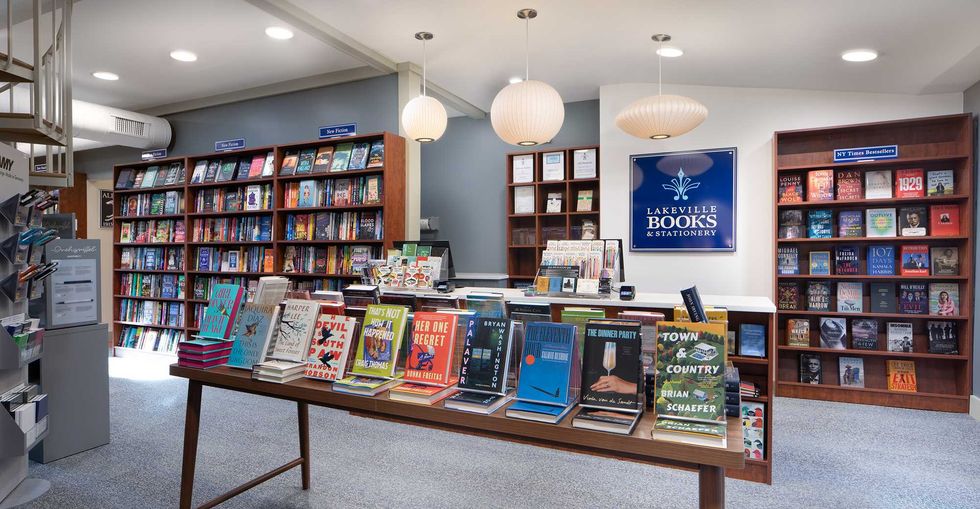Country market reopens with fresh take on local food

Emma Terhar and Tyler Forve kept guests lining up for more during the soft opening of Cornwall Country Market last week.
Photo by Kathryn Boughton

Emma Terhar and Tyler Forve kept guests lining up for more during the soft opening of Cornwall Country Market last week.
CORNWALL — When Henry Breen moved his little market up from the riverside to the newly established intersection of routes 4 and 7 during the Great Depression, it was touted as “the most up-to-date store between New Milford and Canaan.”
The market has seen various owners and various levels of care in the nine decades since then, but today, the description would be as valid as it was in 1935. The interior gleams with glass cases filled with made-from-scratch delicacies; an enclosed area for preparing gourmet chocolates, a sparkling kitchen; and a crisply clean, white-walled retail area. The shelves, which are still being filled, offer superior food products, while an alcove has been sequestered for a wide range of products produced by Cornwall crafters and farmers.
The market launched with a soft opening last week, but eager area denizens gave the newly installed staff nary a moment to draw a breath. The market swarmed with customers eager to buy lunch to-go or to consume a meal at the limited number of tables.
“Everyone is running at redline,” said co-proprietor Will Schenk, who has overseen the conversion of the market from a quaint country store to a sleek, 21st-century mercantile.
“Everyone locally talks about Baird’s from the generation previously,” said Schenk. “We spent so long working on building a new concept, a very different philosophy on food than before. I’m excited to finally open to validate these ideas. It’s a vision.”
The new iteration of the market is a combination of a “place for people to go grab a cup of coffee and sandwich, groceries, or our chocolates,” Schenk said.
Emphasis on freshness is being carried throughout the enterprise. “We’re using the market as a pantry for the kitchen,” said Schenk. “We want to bring in a lot of fresh fruit and vegetables — broccolini has been very popular this week — that people can purchase. We want to make the market a place where people can do their shopping for real, not just a last-minute thing they need on a Friday night.”
But because the emphasis will be on freshness, vegetables and fruit that are pushing their prime will be culled and whisked off the kitchen, where co-proprietor and chef Tyler Forve and sous chef Emma Terhaar will work their magic in transforming them into mouthwatering made-from-scratch dishes and sandwiches sure to tempt all three classifications of customers Schenk envisions.
“I see three different groups,” he said. “The locals who want a community spot, a place to hang out. Then there the tradespeople — they need to get in and get out. They want a sandwich and drinks, and they leave their trucks idling out front. And then there are the weekenders and tourists, people going along Route 7. They don’t know where they are, they just know they are hungry. These groups want very different things.
“I don’t think a country market is a viable business model now,” he said. “It may be better to do fewer things and to do them really well. In the world of Amazon, it doesn’t make sense to compete with that, so we will focus on delicious things. We’re making our own breads and sausages and providing the freshest vegetables we can.”
Schenk, who formerly owned a software business in New York City, moved his family to Cornwall in 2020 when COVID-19 tightened its grip on the country. “We found a house in February 2020 and came up for a long weekend — and we’re still here today.”
The family, which already has four children enrolled in Cornwall Consolidated School, is awaiting the imminent arrival of baby number five.
By 2022, the family was so thoroughly ensconced in the area, Schenk sold his business and began looking at the next chapter. He and Forve, his longtime friend, had already looked south at Colombian chocolate growers. “We were trying to find a way to buy chocolate and vanilla directly from the farmers — doing the proper thing down there — and shipping it up here,” he said.
“Since we get our chocolate directly from the grower, it’s remarkable,” he added, saying that the business model embraces sustainable agriculture. “Demand for chocolate is so high the question was ‘how do we find a viable system for the farmer so it doesn’t become a monoculture?’”
Contacts were made, a factory established, and Forve spent four years working in Colombia where he absorbed the culture and creation of quality chocolate. Forve, who trained under several Michelin-level chefs in the San Francisco Bay area, added that because they deal directly with the producers, the chocolate beans can be roasted to their specifications and even soaked in different flavors to give distinctive tastes. A special room was created in the market to make bonbons, paves, chocolate bark and other treats.
Schenk hopes chocolate will set his business apart and make it a destination for shoppers. He noted that winter is the peak sales period for chocolates, with holidays such as Christmas, Valentine’s Day and Easter.
“From our point of view, normally the winter is slow for tourism, but that is also the time when chocolate is at its peak. We hope to do a lot of e-commerce,” he said.
The business also purchases wild vanilla from Colombian farmers and uses it in the candies and such products as the crème fraiche atop pastries and the in-house ice creams.
“We were going to open a cafe in Cornwall Bridge, but for septic reasons, that didn’t happen,” Schenk explained. At the same time, the Cornwall Country Market, just across the road, went on the market, “so we shifted to that.” Schenk still owns the property across the street and “has a lot of ideas” for its use, predicting it will be “a larger part of the chocolate project.”
At present, there are 12 employees working in the market, some at their first jobs.
The market is open Monday-Saturday, 8-3 p.m.
Sharon Center School
SHARON — A Sharon Center School staff member discovered a “facsimile firearm” behind a file cabinet around 2 p.m. Wednesday, Dec. 10, prompting an immediate response from State Police and a same-day notification to parents, according to police officials and an email obtained by The Lakeville Journal.
Melony Brady-Shanley, the Region One Superintendent, wrote in the email that, upon the item’s discovery, “The State Police were immediately notified and responded to the building.”
A canine team was brought in to sweep the building to confirm no additional items were present, “and the building has been fully cleared. The State Police consider this an isolated incident and not criminal in nature,” Brady-Shanley wrote.
State Police explained, “Troopers from Troop B - North Canaan were dispatched to the Sharon Center School for reports of a firearm located in a closet. The firearm was determined to be a non-firing, replica firearm... There was no threat to the school or the public.”
Brady-Shanley emphasized in the e-mail that “the safety and well-being of our students and staff remain our highest priority at all times. We will continue to follow and strengthen our safety protocols to ensure that our schools remain secure, supportive environments for learning.”
The Stone Round Barn at Hancock Shaker Village.
My husband Tom, our friend Jim Jasper and I spent the day at Hancock Shaker Village in Pittsfield, Massachusetts. A cold, blustery wind shook the limbs of an ancient apple tree still clinging to golden fruit. Spitting sleet drove us inside for warmth, and the lusty smells of manure from the goats, sheep, pigs and chickens in the Stone Round Barn filled our senses. We traveled back in time down sparse hallways lined with endless peg racks. The winter light was slightly crooked through the panes of old glass. The quiet life of the Shakers is preserved simply.

Originally founded in England, the Shakers brought their communal religious society to the New World 250 years ago. They sought the perfection of heaven on earth through their values of equality and pacifism. They followed strict protocols of behavior and belief. They were celibate and never married, yet they loved singing and ecstatic dancing, or “shaking,” and often adopted orphans. To achieve their millennialist goal of transcendental rapture, we learned, even their bedclothes had to conform: One must sleep in a bed painted deep green with blue and white coverings.
Shakers believed in gender and racial equality and anointed their visionary founding leader, Mother Ann Lee, an illiterate yet wise woman, as the Second Coming. They embraced sustainability and created practical designs of great utility and beauty, such as the mail-order seed packet, the wood stove, the circular saw, the metal pen, the flat broom and wooden clothespins.
Burning coal smelled acrid as the blacksmith fired up his stove to heat the metal rod he was transforming into a hook. Hammer on anvil is an ancient sound. My husband has blacksmithing skills and once made the strap hinges and thumb latches for a friend’s home.
Shaker chairs and rockers are still made today in the woodworker’s shop. They are well made and functional, with woven cloth or rush seats. In the communal living space, or Brick Dwelling, chairs hang from the Shaker pegs that run the length of the hallways, which once housed more than 100 Shakers.

In 1826, the 95-foot Round Stone Barn was built of limestone quarried from the land of the 3,000-acre Hancock Shaker Village. Its unique design allowed a continuous workflow. Fifty cows could stand in a circle facing one another and be fed more easily. Manure could be shoveled into a pit below and removed by wagon and there was more light and better ventilation.
Shakers called us the “people of the world” and referred to their farm as the City of Peace. We take lessons away with us, yearning somehow for their simplicity and close relationship to nature. One Shaker said, “There’s as much reverence in pulling an onion as there is in singing hallelujah.”
A sense of calm came over me as I looked across the fields to the hills in the distance. A woman like me once stood between these long rows of herbs — summer savory, sage, sweet marjoram and thyme — leaned on her shovel brushing her hair back from her eyes, watching gray snow clouds roll down the Berkshires.
More information at hancockshakervillage.org

Exterior of Lakeville Books & Stationery in Great Barrington.
Fresh off the successful opening of Lakeville Books & Stationery in April 2025, Lakeville residents Darryl and Anne Peck have expanded their business by opening their second store in the former Bookloft space at 63 State St. (Route 7) in Great Barrington.
“We have been part of the community since 1990,” said Darryl Peck. “The addition of Great Barrington, a town I have been visiting since I was a kid, is special. And obviously we are thrilled to ensure that Great Barrington once again has a new bookstore.”
The second Lakeville Books & Stationery is slightly larger than the first store. It offers more than 10,000 books and follows the same model: a general-interest store with a curated mix of current bestsellers, children’s and young readers’ sections; and robust collections for adults ranging from arts and architecture, cooking and gardening, and home design to literature and memoirs. Anne reads more than 150 new titles every year (as many as a Booker Prize judge) and is a great resource to help customers find the perfect pick.
A real-time inventory system helps the store track what’s on hand, and staff can order items that aren’t currently available. There is also a selection of writing and paper goods, including notecards, journals, pens and notebooks, as well as art supplies, board games, jigsaw puzzles and more. The owners scour the stationery trade shows twice a year and, Darryl says, “like to tailor what we offer to suit the interest of our customers in each market.”
The Pecks know what it takes to run a successful local enterprise. Darryl has a 53-year background in retail and has launched several successful businesses. He and Anne owned and operated a bookstore on St. Simons Island, Georgia, from 2019 to 2025. They are tapping into their local roots with both stores. They raised their family in Sharon, and their daughter Alice, a native of the Northwest Corner, manages the Lakeville store.

The family values the role that a retail store plays as a supporting partner in the community, and they prioritize great management in both locations, hiring and training talent from local communities. Their 10 team members across both stores are from the area, and two of the Great Barrington employees previously worked at Bookloft.
Darryl and Anne’s attention to customer service is everywhere apparent and adds to the enjoyable and irreplaceable in-store shopping experience. The books are in pristine condition, eliminating the risk of damage that sometimes occurs during shipping. This is especially important for books that will live on people’s shelves and coffee tables for years.
Darryl says, “People love the in-store discovery — you find books you didn’t know existed, which is very difficult to do on a website. Also, many customers depend on our recommendations when visiting. There is a saying about bookstores versus online ordering: We may not have exactly what you were looking for, but we have what you want.”
Lakeville Books & Stationery’s Great Barrington store is open 7 days a week, Monday-Saturday, 10 a.m. to 6 p.m., and Sunday, 11 a.m. to 5 p.m. Parking is available in the lot behind the building and in the parking lot behind the firehouse. The entrance to the store is accessible from the store parking lot.
For more information, go to lakevillebooks.com., and sign-up for the Lakeville Books newsletter.
Richard Feiner and Annette Stover have worked and taught in the arts, communications, and philanthropy in Berlin, Paris, Tokyo and New York. Passionate supporters of the arts, they live in Salisbury and Greenwich Village.